#eastern hay-scented fern
Text
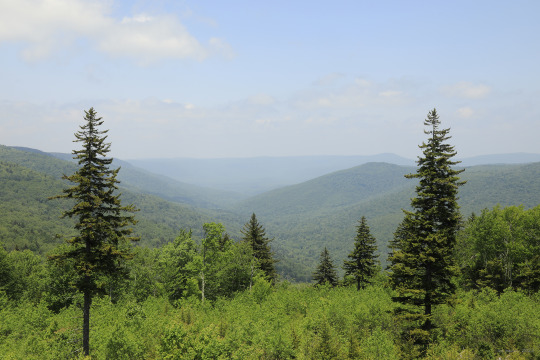



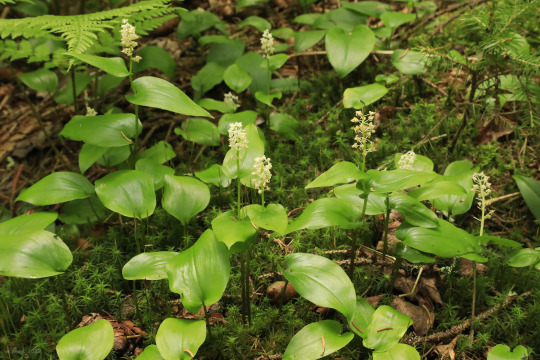

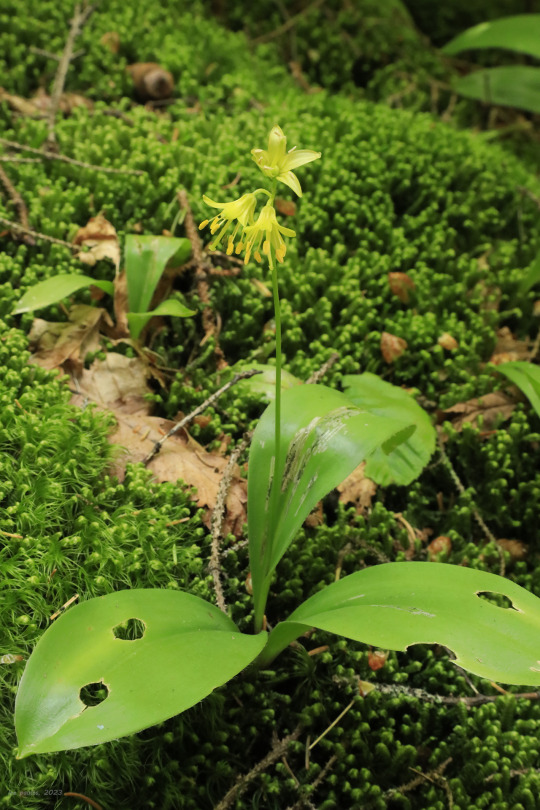
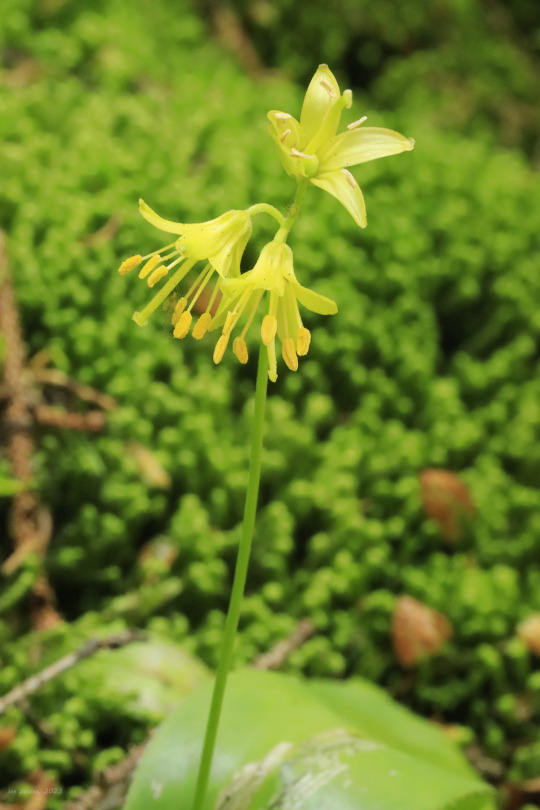





Walk with me: Visit to a high-elevation red spruce forest. The red spruce (Picea rubens) forest on top of Red Spruce Knob, the ninth highest peak in West Virginia, provides a bittersweet glimpse back in time to the primeval beauty and solitude of such places prior to the arrival of the logging companies in the mid-Nineteenth to early Twentieth centuries. The loggers stripped the mountains bare and set in motion the massive wildfires that burned away everything, including the soil itself, down to solid bedrock. Almost a century later, the forest is regenerating and in some places, such as Red Spruce Knob, has regained the richness and vitality of a healthy boreal ecosystem.
From top: a view of Red Spruce Knob, in the far distance, from the Highland Scenic Highway overlook; Canada mayflower (Maianthemum canadense), a ubiquitous understory component of the forest, along with mountain woodsorrel, yellow clintonia (a.k.a. blue-bead lily), hobblebush viburnum, Indian cucumber, green false hellebore, and various mosses and ferns; yellow clintonia (Clintonia borealis) in bloom; pink lady's slipper (Cypripedium acaule); green false hellebore (Veratrum viride) on eastern hay-scented fern (Dennstaedtia punctilobula); and mountain woodsorrel (Oxalis montana).
#appalachia#vandalia#west virginia#wildflowers#spring#flora#allegheny mountains#monongahela national forest#red spruce knob#highland scenic highway#red spruce#canada mayflower#yellow clintonia#blue-bead lily#pink lady's slipper#false green hellebore#eastern hay-scented fern#mountain woodsorrel#mountain wood-sorrel#boreal forest
208 notes
·
View notes
Text



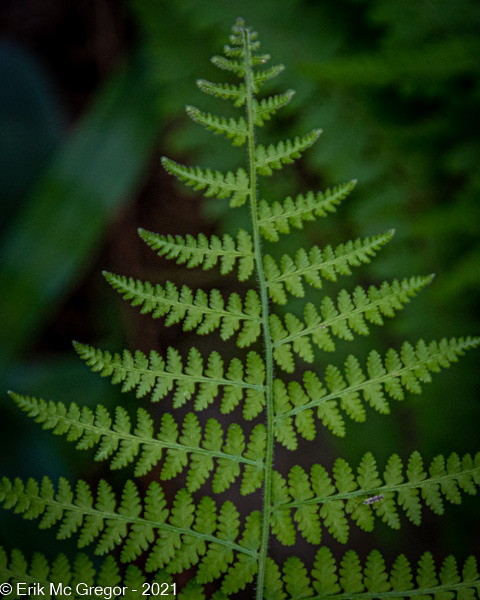
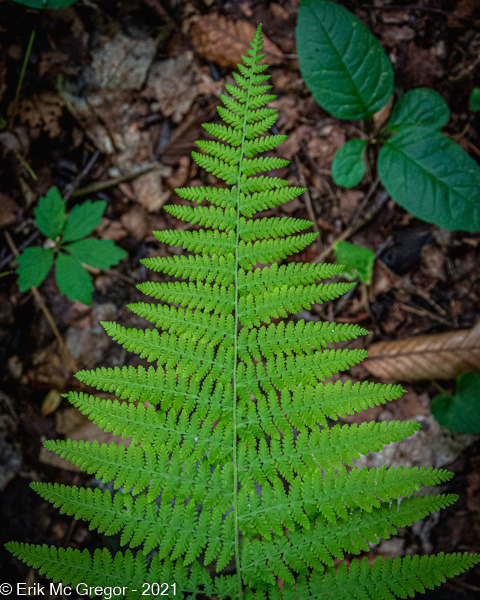



EASTERN HAY-SCENTED FERN - Composition Thursday
© Erik McGregor - [email protected] - 917-225-8963
#PhotoOfTheDay#EasternHayScentedFern#DennstaedtiaPunctilobula#HayScentedFern#fern#ForestFloor#nature#wildlife#IntoTheTrees#forest#IntoTheWoods#WalkInTheWoods#woods#hiking#ExploreHarriman#HarrimanStatePark#NewYork#NaturePhotography#ShotOnNikon#NikonPhotography#NikonD7500#Photography#ErikMcGregor
8 notes
·
View notes
Text
Flora, Fauna, and Environment of Neldoreth (Updated and Added To)
,Flora, fauna, environment/geography of Arda
I did Region here!
Originally requested by @actuallyfingolfin
I did try to organize these more into sections of the forest (openings and glades, margins and edges, moist or shaded soil, etc) and I don’t know if it will be of interest to anyone else but if anyone is interested in sending me a section of a habitat or location for me to elaborate on I will. Or a season!
I put a lot of work into this!
Neldoreth is a forest of beech trees, part of Northern Doriath and contained within Melian’s Girdle. It was here that Lúthien was born and later imprisoned to prevent her from rescuing Beren. It was bordered by the River Esgalduin on the South towards the Northeast and and River Mindeb on the West, both tributaries to Sirion. The tallest beech tree in the forest was Hírilorn and it was here that Lúthien was imprisoned.
Doriath has three forests making up its kingdom; Neldoreth, Nivrim, a small forest of mostly oak trees West of Sirion and Region, in Southern Doriath, a forest of mostly holly where Menengroth was located.
I’ve been thinking a lot about potential biomes ecoregions for Beleriand and the other realms. Ecoregions are patterns of ecologically and geographically defined regions. A comparable biome are temperate broadleaf and mixed forests with English lowlands beech forests being a potential ecoregion.
I also have specific headcanons mentioned here about far Eastern Doriath closer to the river Celon which I will talk about when I do far Eastern Doriath and the lands North of Iant Iaur. These are closer to North Atlantic moist forests and even humid mixed forests.
Neldoreth is a lush, deciduous forest with moderate to heavy rainfall depending on the season. Snowfall is rare.
There are a number of genuses directly referenced in canon in relation to Neldoreth; beech, chestnuts, oak, elm, hemlock, species of fern, grasses, the flower Niphredel which was a creation of Tolkien himself but inspired by snowdrops (though having more petals creating a star like flower) and the white field rose.
The beech trees were likely a combination of European, Chinese and Japanese blue beech and dwarf beech with other trees dotting the boundaries and occasionally mixing with the beeches in groves throughout Neldoreth. These include common ash, common hornbeam, sycamore, sessile oak, common oak, fluttering elm and horse chestnuts.
The forest floor is covered in ferns such as alpine lady fern, bracken, hay scented fern, hard fern, hart tongue fern and mountain wood fern as well as common aloe moss, bog groove moss, red bog moss and more . There are also grassy groves and openings such as those mentioned in the Lay of Leithian. It is possible these were created through the magic of Melian. Woodland opening and transitional habitats are particularly interesting to me. Woodreeds are one possible example.
Spindle, nettle leaved bellflower, bitter vetch, grow on the Western edges of the forest South of Mindeb
Bluebells,, wood anemone, primrose, dog’s mercury, yellow archangle, snow drops, yellow wood violet, wood sorrel, greater starwort, and enchanter’s nightshade are a small selection of flowering plants.
As I said, send a section of the forest or a season and I can go into more detail!
Large bitter cress, water aven, flag lilies, purple marshlocks, common stinging nettles wild parsnip, wild thyme, marsh ragwort and brooklime (among many others, see below) grow in abundance by the banks of Esgalduin and smaller tributary streams.
Barnacle and beard lichens, script lichen, beechwood sickener, earthstar, common bird’s nest fungus, inkcap, fly agaric, yellow brain and velvet shank are a selection of the fungi and lichens that can be found in Neldoreth.
As a number of butterflies feed upon beeches and the other trees common to Neldoreth, Neldoreth is home to a variety of butterflies and moths. Large and light emeralds, winter moths, purple shot copper, cherry bark moth, mourning cloak, wood white, large tortoiseshell, wall brown olive skipper, common blue as well as gothic, ghost, silver ground carpet, dot and poison hemlock moths
There are also a variety of beetles, bees, and praying mantis like insects. (Insect species are so numerous it’s hard to given even a small sample but I’m always happy to make specific posts about insects or any other category of a place)
Bumblebees including tree bumblebees, pollen beetles such as in the genus Meligethes, violet click beetles, oak and speckled bush crickets, rose chafer, hawthorn shieldbug, and biolumenescent fungus gnats (I talked in my post about Western Beleriand about this but while biolumenescnese is more common elsewhere in Beleriand, there are a few biolumenescent species in Menengroth and the woods of Doriath.
Lemon slugs and white lipped snail can also be found and I was talking with @tol-himling about the possibility of stranger species of gastropod being possibly brought over or arriving with Melian.
Birds live by the banks of Esgalduin and throughout the woods itself. White throated dipper, garden and willow warblers, song thrush, common nightingale, nuthatch, gray headed woodpecker, white backed woodpecker, black woodpecker, little bunting, indigo bunting, song sparrow, wood duck and shovelers being some examples.
I also headcanon that there are prehistoric (from today’s perspective) species of birds including small, brightly colored flightless birds that nest in the ferns and glades of the forest.
Palmate newts, great crested newts, agile frogs, moor frogs and small tree frogs are found in vernal streams branching from Esgalduin and Mindeb with agile frogs and dark gray and green toads living away from the water in undergrowth for much of the year.
Neldoreth doesn’t have many larger mammals but there are Chital, water deer and barking deer like species, stoats and lesser weasels, reed vole, water shrews, bush dogs, hedgehogs (mostly European but others too), and flying squirrels (among others)
Dormice especially hazel dormice and grass snake (obviously these are different kinds of animals but I grouped them together because of their habitat) on the margins and towards the river.
I do think in other places of Doriath there are giant elk that do occasionally travel through Neldoreth. There are other species that do not exist today, I mentioned tapir like creatures as well as saber toothed cats (though these are found mostly to the wild and dangerous North of Neldoreth, North of Iant Iaur) and other stranger creatures (I’d be happy to share some headcanons on non existent species or more speculative ecology if anyone wants!)
Esgalduin, the river that runs through Doriath dividing Neldoreth from Region, North to South, is an ecosystem and habitat in itself. If there’s interest I’d love to do a post specifically about it so I don’t over condense here?
But there are a variety of aquatic plants, fish and other creatures there.
As always, requests and asks are open and welcome!
34 notes
·
View notes
Text

A Natural Elegance
Richmond, Virginia (USA)
Photo from July 5, 2021.
This is a Hay Scented Fern, which is native to eastern North America. An incredibly lovely fern that I was happy to find growing near the creek.
33 notes
·
View notes
Text




Plant of the Day
Thursday 11 July 2019
A native of Eastern North America Dennstaedtia punctilobula (hay-scented fern) can be found on the woodland floor in both shade areas and in sunny openings of the tree canopy. This fast-growing deciduous fern forms colonies that can become invasive but it is useful as a ground cover. The fronds smell of freshly mown hay when bruised.
Jill Raggett
#Dennstaedtia#hay-scentedfern#fern#fronds#woodlandfloor#woodlandgarden#woodland#tangledgarden#novascotia#canada#foliage#plants#scented#writtledesign#mhort#gardens#horticulture#labyrinth#seat#stoneseat
241 notes
·
View notes
Photo




Some Images from the narrow cut canyon of Clifton Gorge that contains a large natural population of white cedar, Thuja occidentalis. There are still some Eastern Hemlock, Tsuga canadensis, also found clinging to the cliff side.
These undisturbed cliff communities hold many more treasures to Ohio as well. The Hay Scented Limestone Fern, Gymnocarpium robertianum can be found here and there are even some wall-rue, Asplenium ruta-muraria if you look hard enough.
27 notes
·
View notes
Photo



Common Name: Hay Scented Fern
Botanical Name: Dennstaedtia punctilobula
Native Region: Eastern North America
Mature Size: Height: 1.50 to 2.00 feet, Spread: 2.00 to 3.00 feet - Missouri Botanical Garden
Hardiness Zone: 3 - 8
Preferred Growing Conditions: Best grown in moist, rich, humusy, acidic, medium moisture loams in part shade to full shade. With consistent moisture, it tolerates full sun. Also tolerates a wide range of soils, including poor rocky soils and, once well established, dry soils. Also tolerates full shade. Spreads aggresively by rhizomes to form colonies. - Missouri Botanical Garden
Wildlife Uses: Provides cover for small mammals and ground nesting birds
0 notes
Photo

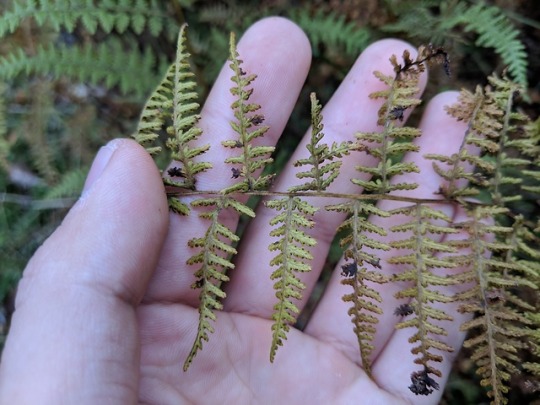


Dennstaedtia punctilobula: Hay-Scented Fern
Plant community: NA
Native region: Eastern North American as far west as Kentucky
Mature size: Herbaceous, usually grows 1.5-2′ tall and 2-3′ wide.
Habitat: Grows in medium moisture and rich soils. Can tolerate full shade. Can tolerate many soils, including poor rocky soils and dry soils.
Eco-Indicator: Moderate to poor soils
Hardiness zones: Zones 3-8
Leaf characteristics: Fern fronds are green to yellowish, up to 30″ long.
Flower and fruit characteristics: Not flowering or fruit-bearing.
Other notable characteristics: Grows through rhizomes.
Urban Uses: Form makes it difficult to establish in the urban environment, but can be used to rehabilitate urban soils for future ecological use.
More on urban soils
Sources: Missouri Botanical Garden, USDA Plants
0 notes
Photo

In their final acts of October sacrifice, hay-scented and interrupted ferns burn away under a beautifully-lit forest. The intoxicating odor of their self-immolation is still in my head.
#appalachia#vandalia#west virginia#fall#autumn#dennstaedtia punctilobula#eastern hay-scented fern#hay-scented fern#claytosmunda claytoniana#interrupted fern#allegheny mountains#monongahela national forest
65 notes
·
View notes